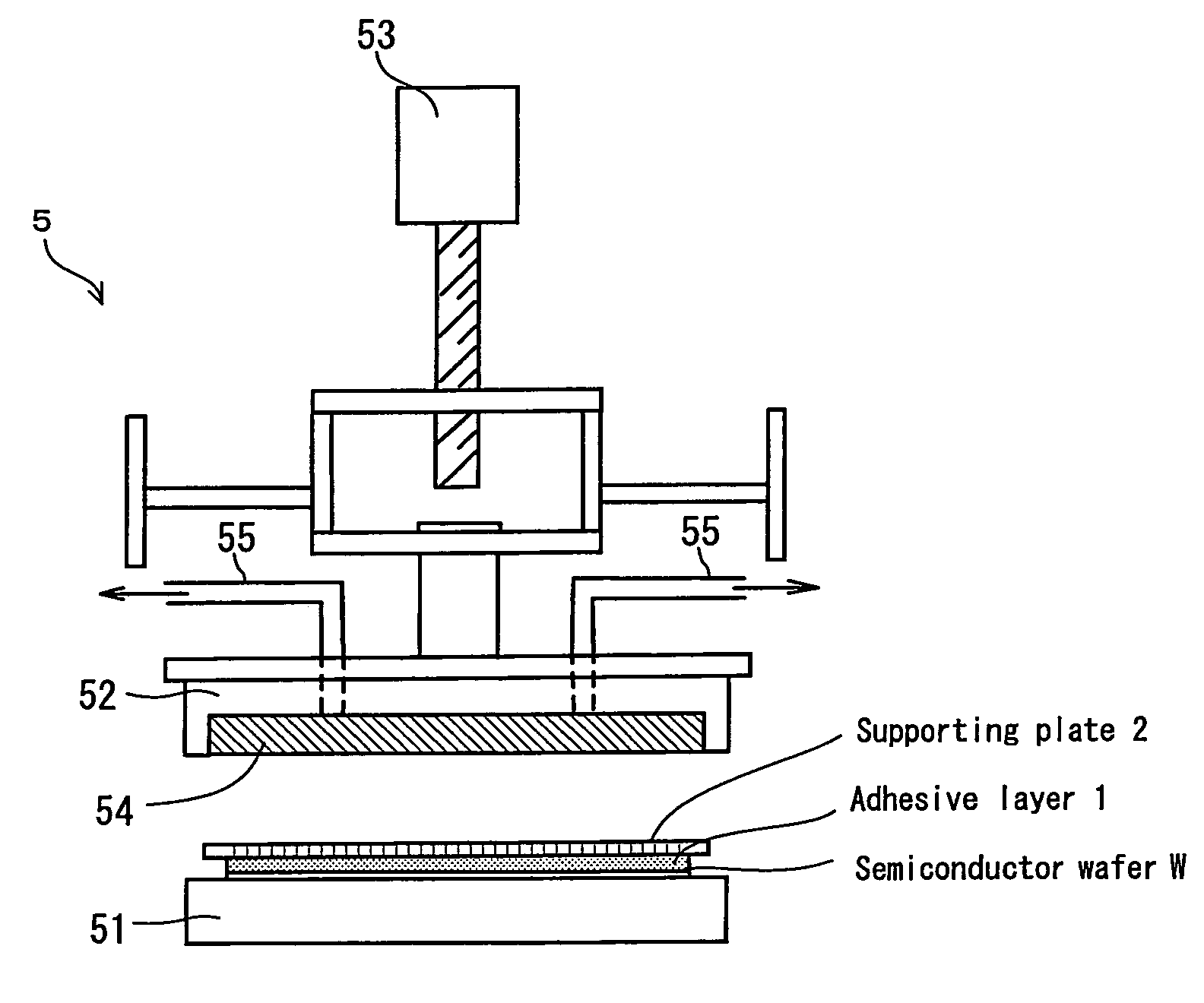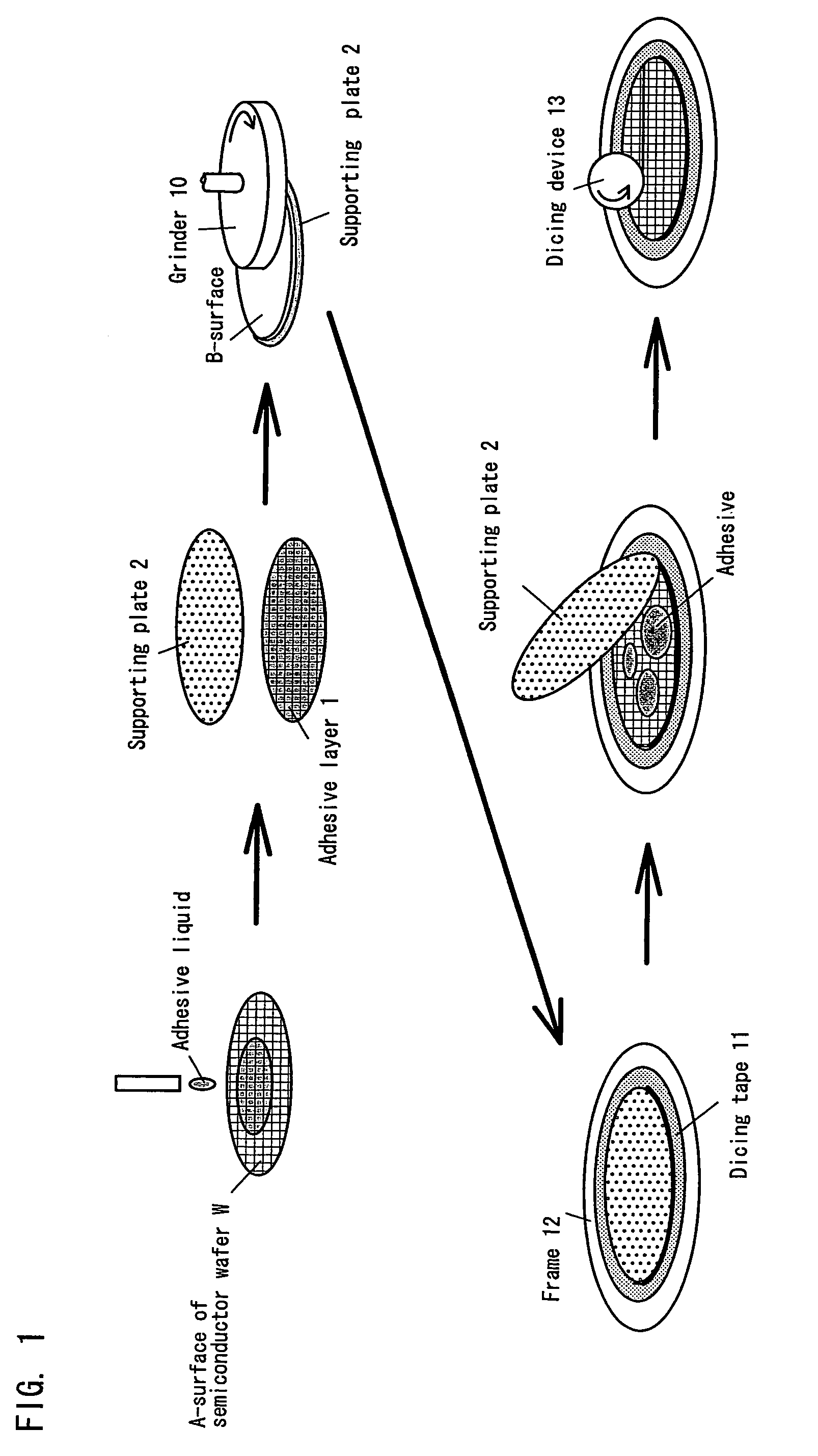Substrate attaching method
a technology of substrate and adhesive, which is applied in the directions of adhesive types, transportation and packaging, chemical instruments and processes, etc., can solve the problems of insufficient protection tape to support thinned semiconductor wafers, easy cracking or chipping of semiconductor wafers when the tape is applied, and the transfer needs to be carried out by manpower. , to achieve the effect of improving the uniformity of film thickness
- Summary
- Abstract
- Description
- Claims
- Application Information
AI Technical Summary
Benefits of technology
Problems solved by technology
Method used
Image
Examples
Embodiment Construction
[0028]Embodiments of the present invention will be described below with reference to the attached drawings. FIG. 1 is a view showing processes for thinning a semiconductor wafer in which an attaching method according to the present invention is incorporated. First, an adhesive liquid is applied onto a circuit(element)-formed surface of a semiconductor wafer W. The application is conducted by using a spinner or the like. The material for the adhesive liquid is an acrylic resin or a novolac-type phenol resin.
[0029]Next, the adhesive liquid undergoes preliminary drying, so that its flowability is reduced and it can keep its shape as an adhesive layer 1. For the preliminary drying, heating is conducted for 5 minutes at a temperature of 80° C. by using an oven. The thickness of the adhesive layer 1 is determined based on the irregularities of the circuit which has been formed on the surface of the semiconductor wafer W. If a sufficient thickness is not obtained by one application, applic...
PUM
| Property | Measurement | Unit |
|---|---|---|
| temperature | aaaaa | aaaaa |
| temperature | aaaaa | aaaaa |
| thickness | aaaaa | aaaaa |
Abstract
Description
Claims
Application Information
 Login to View More
Login to View More - R&D
- Intellectual Property
- Life Sciences
- Materials
- Tech Scout
- Unparalleled Data Quality
- Higher Quality Content
- 60% Fewer Hallucinations
Browse by: Latest US Patents, China's latest patents, Technical Efficacy Thesaurus, Application Domain, Technology Topic, Popular Technical Reports.
© 2025 PatSnap. All rights reserved.Legal|Privacy policy|Modern Slavery Act Transparency Statement|Sitemap|About US| Contact US: help@patsnap.com



